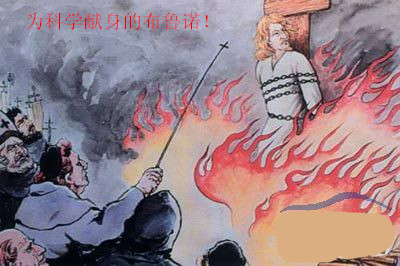In the spring of 1904, Rutherford traveled to London to give a lecture at the Royal Institution—the august organization founded by Count von Rumford only 105 years before, though that powdery and periwigged age now seemed a distant eon compared with the roll-your-sleeves-up robustness of the late Victorians. Rutherford was there to talk about his new disintegration theory of radioactivity, as part of which he brought out his piece of pitchblende. Tactfully—for the aging Kelvin was present, if not always fully awake—Rutherford noted that Kelvin himself had suggested that the discovery of some other source of heat would throw his calculations out. Rutherford had found that other source. Thanks to radioactivity the Earth could be—and self-evidently was—much older than the twenty-four million years Kelvin’s calculations allowed.
1904年春,盧瑟福來到倫敦給英國皇家科學研究所開了一個講座——該研究所是倫福德伯爵創建的,只有150年歷史,雖然在那些卷起袖子準備大干一場的維多利亞時代末期的人看來,那個搽白粉、戴假發的時代已經顯得那么遙遠。盧瑟福準備講的是關于他新發現的放射現象的蛻變理論;作為講課內容的一部分,他拿出了那塊瀝青鈾礦石。盧瑟福很機靈地指出——因為年邁的開爾文在場,雖然不總是全醒著——開爾文本人曾經說過,要是發現某種別的熱源,他的計算結果會被推翻。盧瑟福已經發現那種別的熱源。多虧了放射現象,可以算出地球很可能——不言而喻就是——要比開爾文最終計算出的結果2400萬年古老得多。

Kelvin beamed at Rutherford’s respectful presentation, but was in fact unmoved. He never accepted the revised figures and to his dying day believed his work on the age of the Earth his most astute and important contribution to science—far greater than his work on thermodynamics.
聽到盧瑟福懷著敬意的陳述,開爾文面露喜色,但實際上無動于衷。他拒不接受那個修改的數字,直到臨終那天還認為自己算出的地球年齡是對科學最有眼光、最重要的貢獻——要比他在熱力學方面的成果重要得多。
As with most scientific revolutions, Rutherford’s new findings were not universally accepted. John Joly of Dublin strenuously insisted well into the 1930s that the Earth was no more than eighty-nine million years old, and was stopped only then by his own death. Others began to worry that Rutherford had now given them too much time. But even with radiometric dating, as decay measurements became known, it would be decades before we got within a billion years or so of Earth’s actual age. Science was on the right track, but still way out.
與大多數科學革命一樣,盧瑟福的新發現沒有受到普遍歡迎。都柏林的約翰·喬利到20世紀30年代還竭力認為地球的年齡不超過8900萬年,堅持到死也沒有改變。別的人開始擔心,盧瑟福現在說的時間是不是太長了點。但是,即使利用放射性測定年代法,即后來所謂的衰變計算法,也要等幾十年以后我們才得出地球的真正年齡大約是在10億年以內。科學已經走上正軌,但仍然任重而道遠。
來源:可可英語 http://www.ccdyzl.cn/Article/201610/470185.shtml











